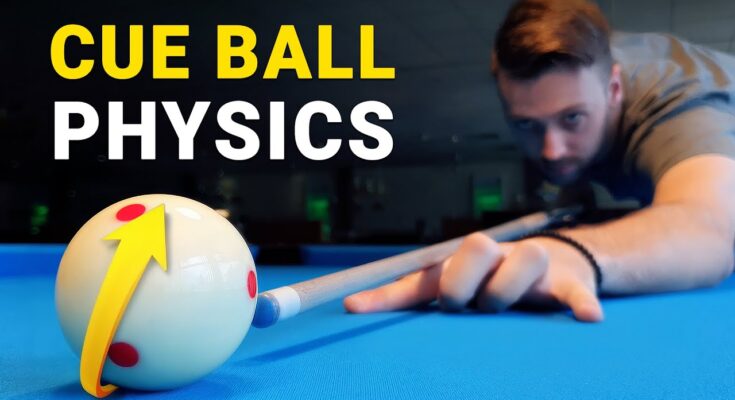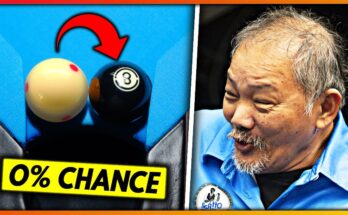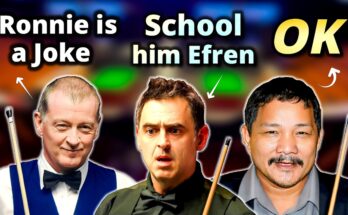How to Always Know Where the Cue Ball Will Go

Predicting the cue ball’s path in pool requires understanding spin, angles, speed, and table dynamics. While no one can always know exactly where the cue ball will go due to variables like table conditions and human error, you can significantly improve your control with these techniques:
1. Master the Basics of Cue Ball Control
- Angle of Incidence Equals Angle of Reflection: When the cue ball hits a rail without spin, it rebounds at the same angle it approached (like a mirror). Learn to visualize this “mirror angle” for kick shots.
- Tangent Line (90-Degree Rule): For cut shots, the cue ball initially follows a line 90 degrees from the object ball’s path at contact (the tangent line). Without spin, it follows this line briefly before curving due to friction or spin.
- Example: If you cut an object ball to the left, the cue ball moves right along the tangent line initially.
2. Control Spin
Spin dramatically alters the cue ball’s path. Learn these spin effects:
- Topspin (Follow): Makes the cue ball roll forward after contact, curving past the tangent line.
- Hit above the cue ball’s center (1-2 tips up).
- Use: To move the cue ball forward for position on the next shot.
- Backspin (Draw): Makes the cue ball slide or roll backward after contact.
- Hit below center (1-2 tips down).
- Use: To pull the cue ball back for position.
- Side Spin (English): Alters the rebound angle off rails and affects the tangent line slightly.
- Left English (hit left of center): Cue ball curves/spins left or rebounds wider to the right off a rail.
- Right English: Opposite effect.
- Use: To adjust position or curve around obstacles.
- No Spin (Center Ball): Minimizes curve, making the cue ball follow the tangent line or natural rail angles more predictably.
3. Control Speed and Stroke
- Speed Affects Spin and Distance:
- Soft shots maximize spin effect (e.g., draw pulls back farther).
- Hard shots reduce spin’s influence, making the cue ball follow the tangent line or rail angle more closely.
- Smooth Stroke: A consistent, level stroke ensures the spin and speed you intend. Jerking or miscuing throws off control.
4. Use the Table’s Geometry
- Rail Angles: Memorize common kick shot angles (e.g., 1-rail, 2-rail systems). For example:
- 1-Rail Kick: Divide the table into a diamond system (most tables have diamonds on rails). Aim at a diamond to predict where the cue ball rebounds.
- Example: Hitting the cue ball into the second diamond from a corner pocket often sends it to the opposite corner.
- Table Zones: Visualize the table in zones (e.g., near pockets, center, rails) to plan where you want the cue ball to stop.
- Practice Drill: Set up a cue ball and object ball. Hit the object ball at different angles (e.g., 30°, 45°) with no spin, then add topspin or draw. Note where the cue ball goes each time.
5. Account for Table Conditions
- Cloth Speed: New or slick cloth makes the cue ball slide farther; worn cloth increases friction, reducing spin effect.
- Rail Bounce: Lively rails make rebounds sharper; dead rails absorb energy, altering angles.
- Cue Ball Condition: A clean cue ball spins better; a dirty one may skid.
- Adjust: Test shots on your table to calibrate for its unique feel.
6. Plan Your Position
- Think Ahead: Before shooting, visualize the cue ball’s path and where it needs to stop for your next shot.
- Shot Selection: Choose shots that make position easier (e.g., avoid long shots requiring heavy spin unless necessary).
- Safety Play: If unsure, aim for a “safe zone” (e.g., center table) to avoid scratches or tough positions.
7. Practice Drills for Precision
- Stop Shot Drill: Place the cue ball and object ball in a straight line. Practice hitting center ball to stop the cue ball dead on contact.
- Tangent Line Drill: Set up a 45-degree cut shot. Hit with no spin and observe the cue ball’s 90-degree path. Then add topspin or draw to see how it deviates.
- Rail Kick Drill: Place the cue ball randomly and aim to hit a specific rail diamond, predicting the rebound point.
- L-Drill: Set up balls in an L-shape. Pocket each ball while controlling the cue ball to stay in a small target zone.
8. Learn from Observation
- Watch the Cue Ball: After each shot, note its path and compare it to your prediction. Adjust your aim, spin, or speed.
- Study Pros: Watch matches (e.g., on YouTube or X posts from pool communities) to see how pros control the cue ball. Players like Efren Reyes or Shane Van Boening excel at this.
- Cue Ball Path Tools: Some apps or training aids (e.g., CueSight laser) project the cue ball’s path for practice.
9. Mental Checklist Before Each Shot
- Visualize: Picture the cue ball’s path (contact, tangent line, spin effect, final stop).
- Check Variables: Spin, speed, angle, table conditions.
- Commit: Trust your plan and stroke smoothly.
10. Advanced Tips
- Combine Spins: Use topspin with left English to curve the cue ball in complex ways (e.g., for massé-like effects).
- Massé Shots: For extreme curves around blockers, elevate the cue (45-80°) and hit with heavy spin (see massé tutorial details from your previous query).
- Deflection (Squirt): Account for cue ball deflection when using side spin. A low-deflection cue reduces this effect.
Key Notes
- Practice is Key: Spend hours on drills to build muscle memory and intuition.
- Table Variability: Every table plays differently. Spend 5-10 minutes testing shots on a new table.
- Stay Calm: Overthinking or rushing leads to errors. Focus on one variable (spin, speed, angle) at a time.
- Resources: Search “cue ball control drills” on YouTube (e.g., Dr. Dave Billiards or Niels Feijen’s videos) or X for community tips. I can pull specific videos or posts if you’d like.
Would you like me to search for a specific drill video or X post on cue ball control, or focus on a particular shot type (e.g., stop shot, kick shot)?



